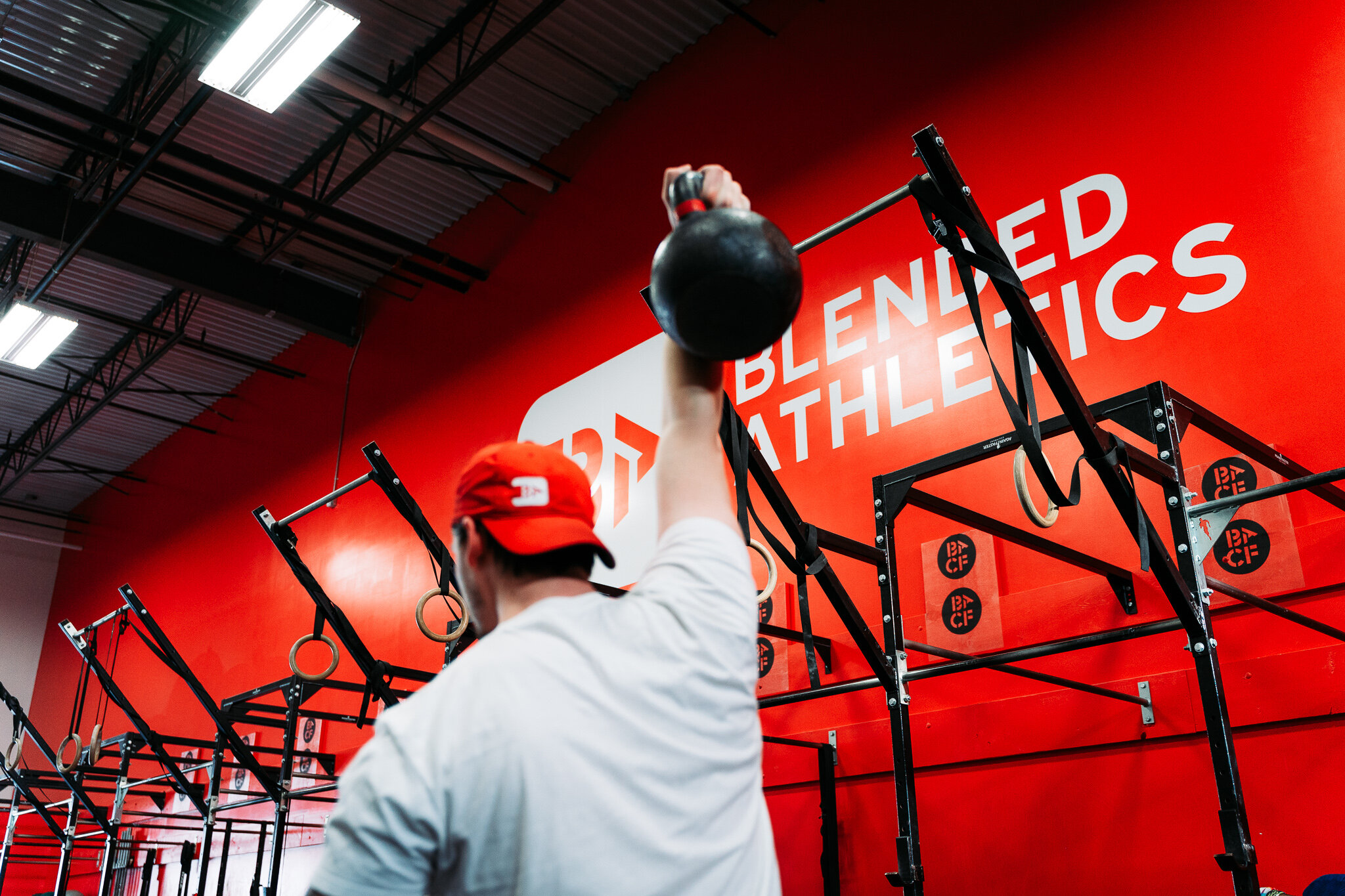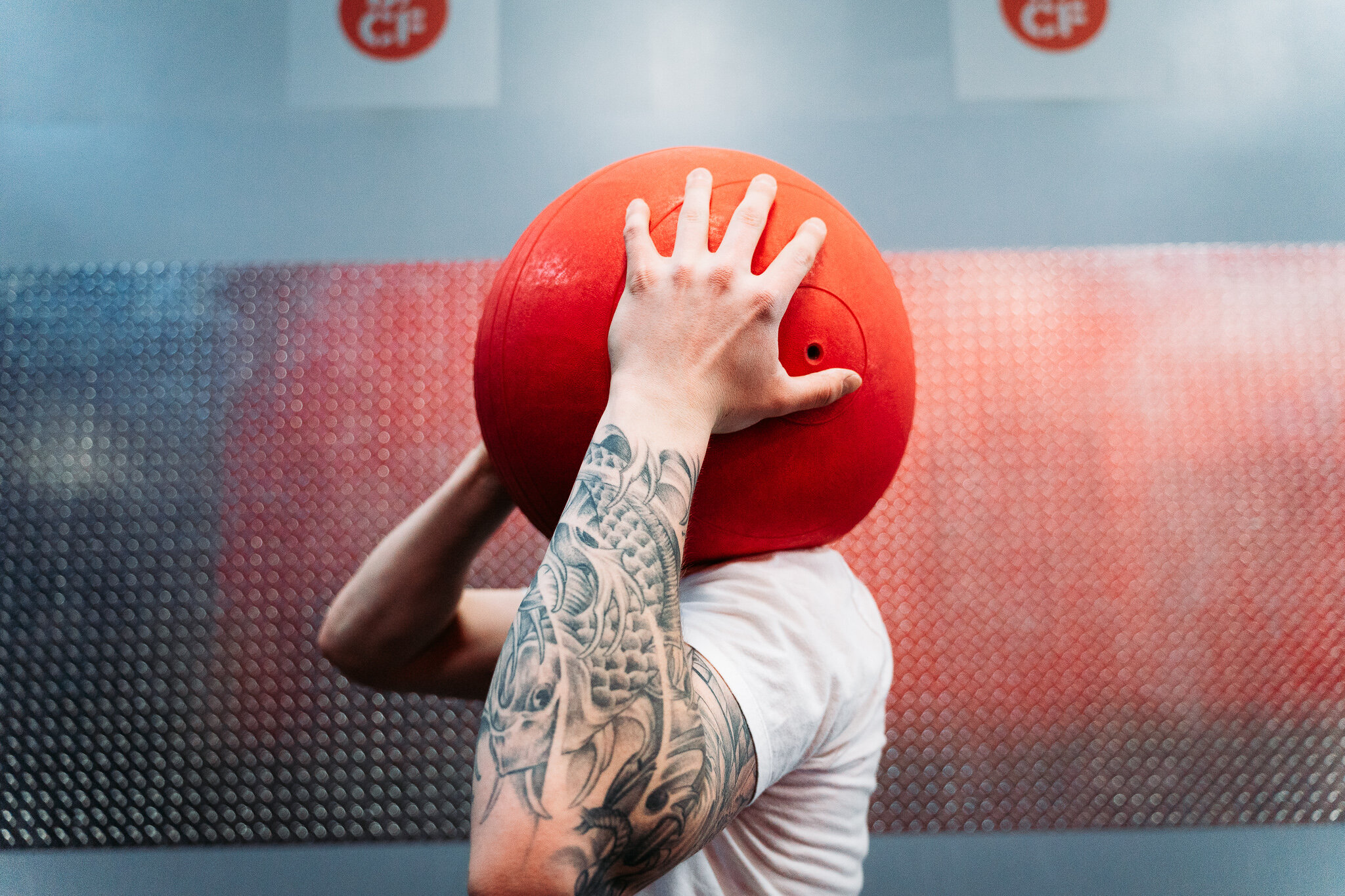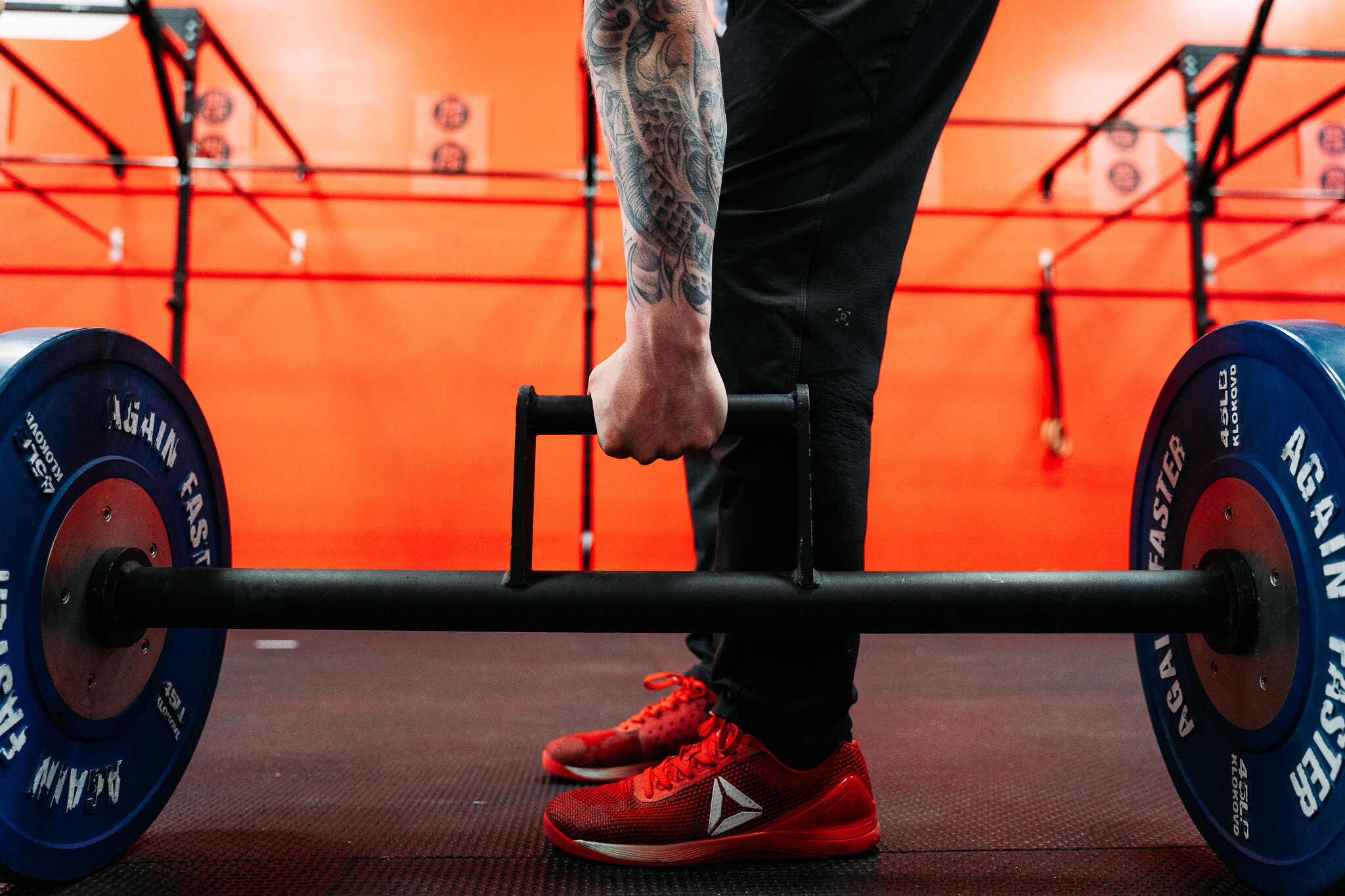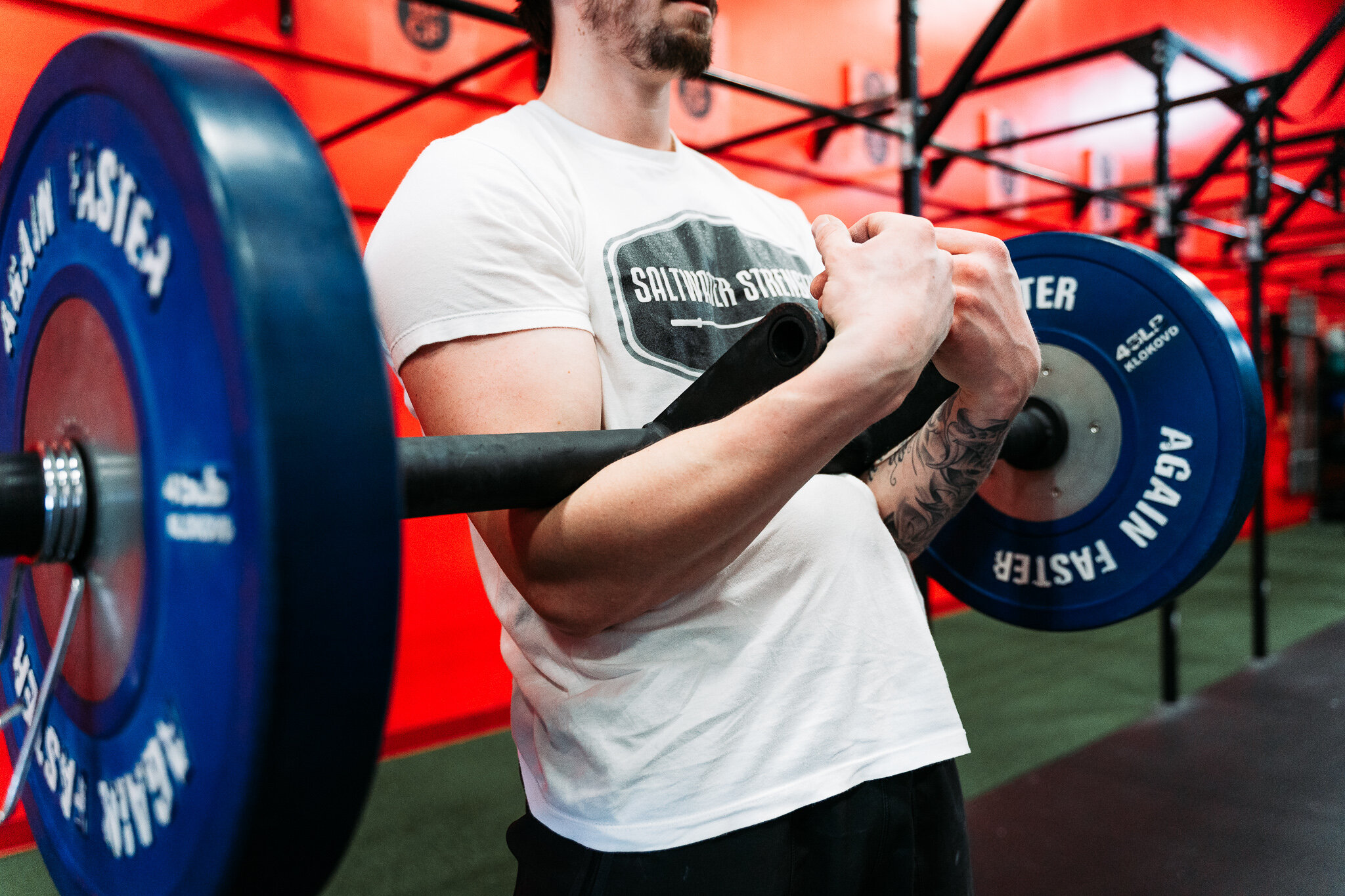The Importance of the Loaded Carry
I’m a big fan of loaded carries. I use them often in my own training and in the programs I write for my clients. I started doing carries consistently about 5 years ago when I started working with my coach (Travis Mash, Mash Elite Performance) and doing Olympic Weightlifting. I was training out of my garage with limited equipment, so we had to get a little creative with my accessory work. Most sessions would end with some kind of weighted walking. I’d rotate through wheelbarrow walks, 1 arm farmers carry with a barbell, front rack or overhead carries with a barbell, and shoulder or overhead walks with a 6ish foot log.




I’d been training consistently for about 7 years at that point, doing strength and conditioning work for hockey as a teenager, and then training for powerlifting for a couple of years, but I had never consistently used loaded carries in my training. When I started working with coach Mash, I had a PR back squat of 365lb low bar. About a year and a half later I squatted 465 high bar. We did a lot of squat training during that time, but I truly believe that the loaded carry work had a huge impact on my core stability and was a big part of adding that weight to my squat.
One of the biggest reasons to do loaded carries is to strengthen the core while standing in an upright posture. The core is essentially all of the muscles that work together to support the spine and the pelvis. Having a strong core means that you can maintain a rigid torso and restrict movement at the spine. This allows you to effectively transfer power from the legs and hips into the bar when squatting, into the shoulders and arms when throwing, or to produce the maximal force during almost any athletic activity.
For a lot of people, when they think of core training it’s all sit-ups and leg lifts. That’s only one aspect of training the core and it doesn’t necessarily translate to being able to brace and stabilize the spine effectively under a loaded barbell or when pulling a heavy bar off the floor. Loaded carry variations train the core in similar postures that you need to be strong when moving heavy objects. Depending on the variation, here are some other potential benefits of loaded carries
They can help improve your posture by strengthening your upper back and teaching you to lock the shoulders down. The core muscles also have to work to keep you upright and resist against the weight.
They can help to improve hip strength and stability. Each step you take you have to support the load primarily on one leg. This is especially beneficial if you don’t include much single leg work in your training.
They can help you learn to brace the torso and stay tight while moving a heavy load.
Overhead variations can build a lot of shoulder stability and translate well to improved strength in other overhead movements.
They can help build foot strength and stability if performed without shoes. A more stable foot means a more stable foundation to squat or pull from.
They’re simple and don’t take much technique work to see benefits.
Here are some of my favourite carry variations:
2 arm farmers carry
1 arm farmers carry
Front rack barbell walks
Zercher carry
D-Ball or Sandbag carries (in front or on the shoulder)
1 arm DB or KB overhead walks
I don’t like heavy 2 arm DB or KB overhead because there is more risk of injury. If you have to drop one or both of the weights you don’t have the free arm to help guide it away from your body, so there is some risk of dropping it on your head. If you want to do 2 arm overhead walks I prefer using a bar.
Barbell or Axle overhead walks
Another note for any overhead variations: make sure you focus on keeping your shoulder(s) locked down and your ribcage pulled down as well. Think of maintaining as close to perfect posture as you are able. You don’t want to be leaning back and overextending the low back under a heavy weight overhead.
For me, loaded carries are a staple in my training and in the programs I write. It’s important to make sure that you are progressing them and using different variations. Otherwise you will adapt to them and stop seeing progress. I like to perform carries 2-4 times a week (depending on overall training frequency and training time) and I will usually use a different variation for each day. Over 3-4 weeks, I’ll progress either the weight, the time or the distance on each variation and then pick new variations for the next block of training. You can vary the carries by choosing a different type of carry, by adding fat grips, walking forwards vs backwards, or changing the way you prescribe sets and reps (long distances vs short, set amount of time vs for steps etc).
For example:
Week 1:
Day 1: 2 arm farmers carry. 3 sets of 30 seconds. As heavy as possible.
Day 2: 1 arm DB overhead carry. 3 sets of 25 slow steps forward + 25 backwards.
Day 3: Zercher carry with barbell. 3 x 50 feet
Week 2:
Day 1: 2 arm farmers carry. 3 sets of 40 seconds. As heavy as possible.
Day 2: 1 arm DB overhead carry. 3 sets of 35 slow steps forward + 35 backwards.
Day 3: Zercher carry with barbell. 4 x 50 feet
Week 3
Day 1: 2 arm farmers carry. 3 sets of 50 seconds. As heavy as possible.
Day 2: 1 arm DB overhead carry. 3 sets of 45 slow steps forward + 45 backwards.
Day 3: Zercher carry with barbell. 5 x 50 feet
If you don’t already do weighted carries, try adding some into your workouts a coupe times a week and you’ll likely see some positive carryover to the rest of your training. If you’re like me and don’t love doing a lot of hard cardio, loaded carries can be a great tool to sneak in some conditioning work and get your heart rate up a little as well.
Feel free to reach out to me at cody@blendedathletics.com or at @bigblanch29 on Instagram if you want help adding these movements into your weekly workouts, or if you have any strength/fitness questions. I love talking training and I look forward to hearing from you!
